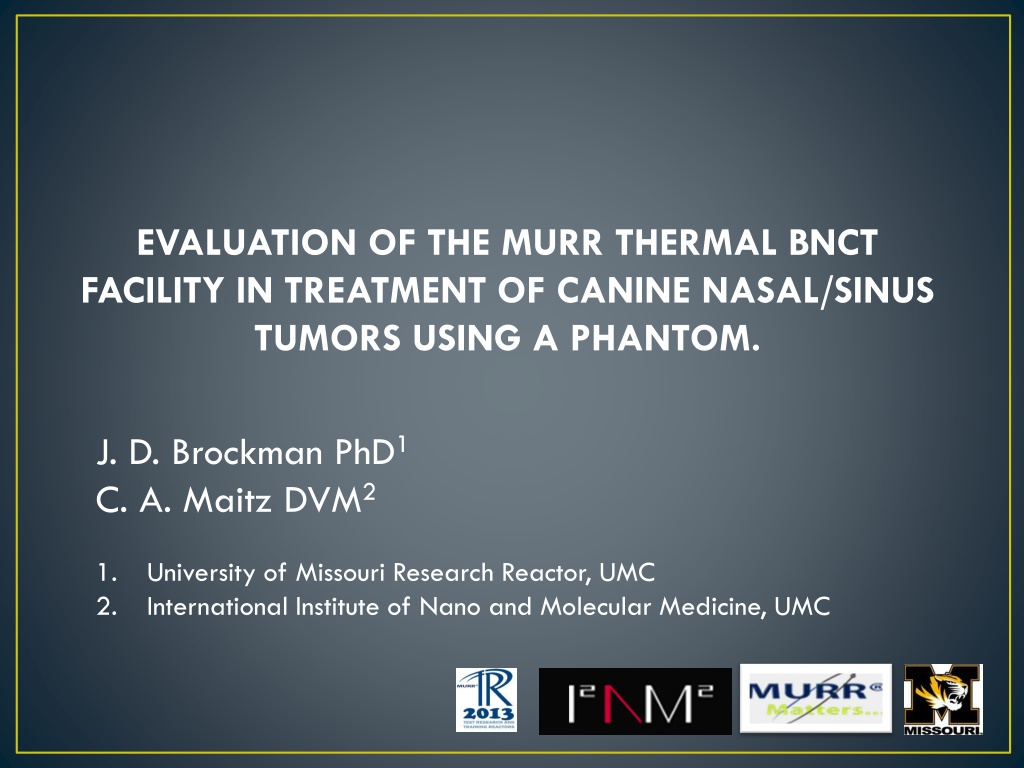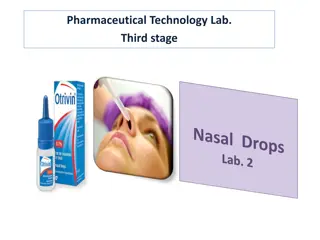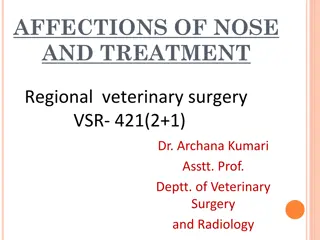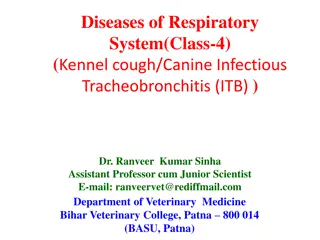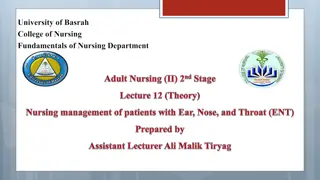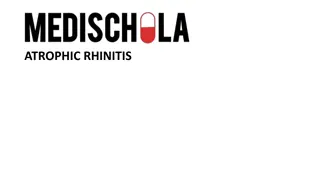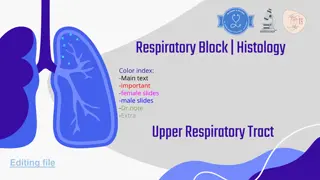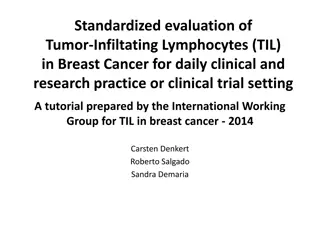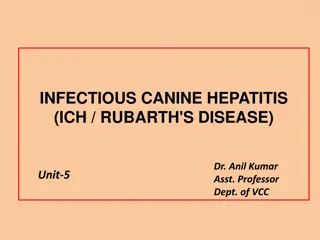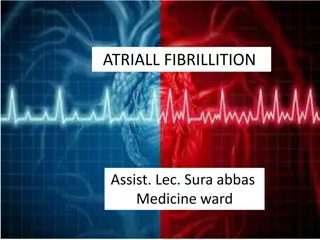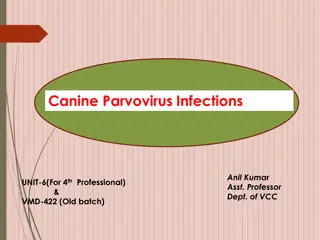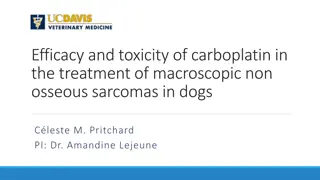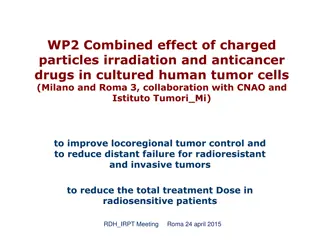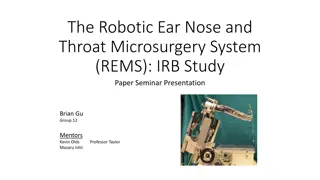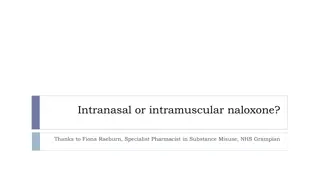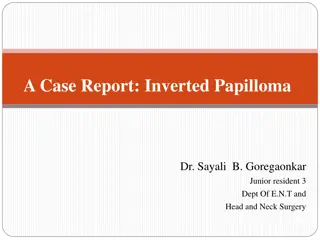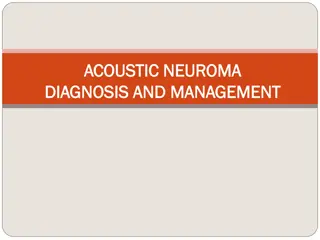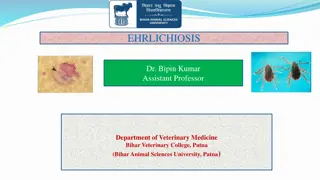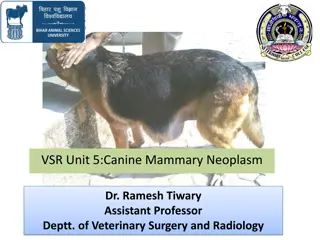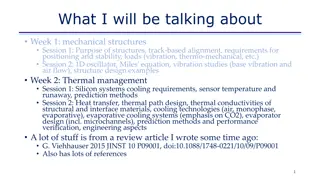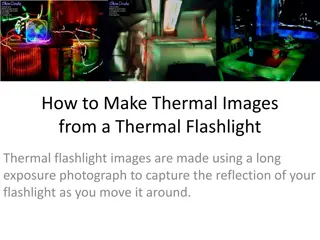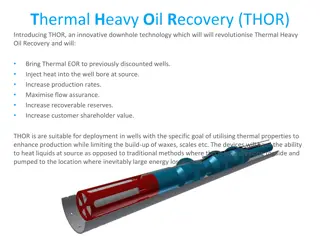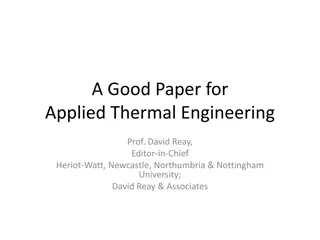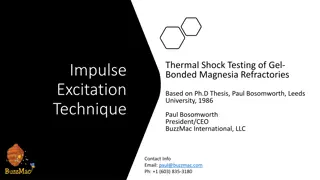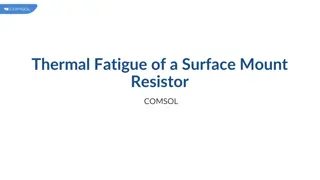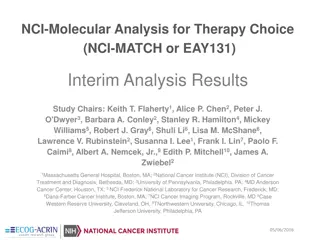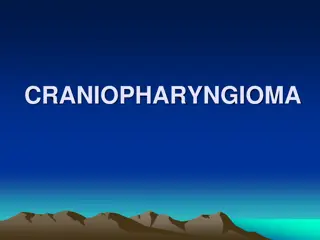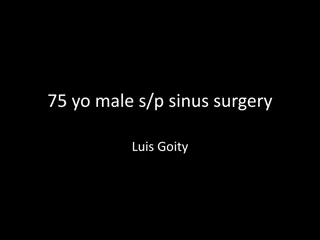Evaluation of MURR Thermal BNCT Facility for Canine Nasal/Sinus Tumor Treatment
The study evaluates the MURR Thermal BNCT Facility's effectiveness in treating canine nasal/sinus tumors using a phantom. The facility, located at the University of Missouri Research Reactor, offers Boron Neutron Capture Therapy (BNCT) under the direction of Dr. Fred Hawthorne. Key features include single crystal silicon and bismuth neutron filters for treatment precision. The facility provides a thermal neutron beam with a Cd ratio of 130 and a low gamma dose, suitable for irradiating mice to large dogs. Various targets of interest are addressed, such as High-grade Glioma and Metastatic Liver Tumors. Neutron spectrum measurements and flux distribution data are also analyzed.
Download Presentation

Please find below an Image/Link to download the presentation.
The content on the website is provided AS IS for your information and personal use only. It may not be sold, licensed, or shared on other websites without obtaining consent from the author. Download presentation by click this link. If you encounter any issues during the download, it is possible that the publisher has removed the file from their server.
E N D
Presentation Transcript
EVALUATION OF THE MURR THERMAL BNCT FACILITY IN TREATMENT OF CANINE NASAL/SINUS TUMORS USING A PHANTOM. J. D. Brockman PhD1 C. A. Maitz DVM2 1. 2. University of Missouri Research Reactor, UMC International Institute of Nano and Molecular Medicine, UMC
BNCT at the University of Missouri IINMM and the MURR Mr. Ralph Butler and the 10 MW University of Missouri Research Reactor (MURR) Dr. Fred Hawthorne and the International Institute of Nano and Molecular Medicine (IINMM)
Boron Neutron Capture Therapy Targets of traditional and current interest: 7Li 0.85MeV High-grade Glioma Neutron 5 m 10B 1.47 MeV Primary and Metastatic Melanoma Gamma (0.48 MeV) 10 m Metastatic Liver Tumors Head and Neck Tumors (1.49 MeV)
Thermal Neutron BNCT at MURR Thermal neutron beam Cd Ratio 130 Th flux 8.8X108 n/cm2/s Low gamma dose Accessible during reactor operation Irradiate mice up to large dogs
Key Design Feature: Single Crystal Silicon and Single Crystal Bismuth Neutron Filters Silicon Bismuth
Coupled DORT and MCNP5 Model 59 group Source from DORT 2D calculation Irradiation Position Bi Crystal Si Crystal
Radial Flux Distribution Cu/Au wires Mean Au activity: 9.73X1014 dps/n 4% Mean Au/Cu ratio: 22.1 1.7%
Over determined 6 Group Neutron Spectrum 1.E+09 1.E+08 Bare 198Au, 55Mn Flux/Lethargy group 1 group 2 1.E+07 group 3 Cd 187W group 4 group 5 group 6 Cd 64Cu, 56Mn Cd 198Au A-Priori 1.E+06 Cd 116mIn B 115mIn 1.E+05 1.E-04 1.E-02 1.E+00 1.E+02 Energy, eV 1.E+04 1.E+06 1.E+08 Nigg, et al, Med Phys. 27 359-367
Under determined 20 Group Neutron Spectrum J. D. Brockman, D. W. Nigg, M. F. Hawthorne, M&C 2013, Sun Valley Idaho, USA May 5-9 2013
Thermal Neutron Beam Characteristics Thermal neutron Flux 8.8X108n/cm2/s. Cd Ratio =130:1 Photon Dose (Ion Chamber) 64 cGy/hr 62 cGy/hr Hydrogen Recoil (Knock On) 82 cGy/hr Boron Capture Dose with 60 g/g B in tissue 15.5 Gy/hr 14N(n,p)14C
Treatment of Mice bearing EMT6 tumors with liposomes containing MAC and TAC Tail vein injection Liposome delivery of MAC and TAC injection protocol 54 h post injection 68 g/g B in tumor Tumor/blood 1.88:1 Kueffer P J et al. PNAS 2013;110:6512-6517
Tumor growth curves for EMT6 Mice Black: control Open: two 30 min irradiations 1 week apart Black: control Open: 60 minute irradiation Black: control Open: 30 min irradiation Y Axis: Tumor Growth Volume normalized to average volume at day zero X Axis: Days Following Irradiation
Potential Treatment of Canine Nasal Tumors Canine nasal carcinoma and sarcoma are rare. Radiation therapy is gold standard for treatment. Median Survival Time with radiation treatment 12-18 months. Most dogs die of local disease akin to human nasal sino tumors.
Nasal-Sino Dog PMMA Phantom Frontal Sinus Surface Frontal Nasal Passage CT SCAN
Lt Lateral % Flux 44 40 39 34 14 53 52 42 48 23 9 100 56 Rt Lateral % Flux 43 42 33 46 12 26 28 26 23 12 100 9 19 Dorsal % Flux 49 59 50 49 55 49 54 47 46 44 78 48 100 Flux Wire Position R1 Nasal Passage R2 Nasal Passage R3 Nasal Passage R4 Nasal Passage R5 Frontal Sinus L1 Nasal Passage L2 Nasal Passage L3 Nasal Passage L4 Nasal Passage L5 Frontal Sinus R6 Surface L6 Surface Dorsal
Results Conformational Irradiation of Dog Phantom for treatment of Nasal tumors 28% left lateral 20% right lateral 52% dorsal All regions receives 1.0E+12 n/cm2 in 58 minutes Nasal passage receives 1.0E+12 n/cm2 in 33 minutes
Conclusion A therapeutic neutron dose for treatment of sino-nasal cavity cancer in dogs is feasible. Future Work Experimentally measure treatment depth in canine sino-nasal cavity. Develop treatment model using MCNP or other treatment protocol software such as SeraMC from INL to fully calculate neutron dosimetry based on patient specific geometry.
Acknowledgements Dr. Frederick Hawthorne IINMM Dr. David Nigg INL Charlie McKibben MURR MURR Staff Operations Health Physics Machine Shop Electrical Shop
